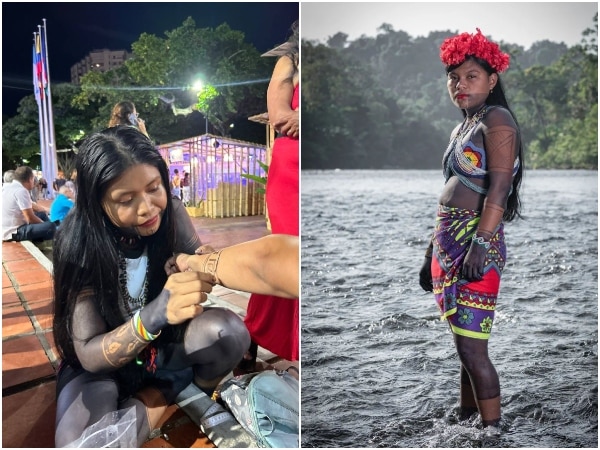Within the framework of COP16 in Cali, representatives of different communities make known their culture, traditions and their deep connection with nature.
News Cali.
The cultural diversity of the Embera indigenous people is manifested in a remarkable way, reflecting the differences in their ways of life depending on the environment in which they live. According to the National Indigenous Organization of Colombia (ONIC), this community is divided into two large groups: the Dobida and the Eyabida. The Embera Dobida, in particular, have adapted their lifestyle to the river banks, where they build their houses and gardens. Fishing becomes an essential activity for their subsistence, cementing their relationship with the water and the biodiversity that surrounds them.
Also read:
A distinctive aspect of the Embera Dobida culture is the use of face and body paint. This practice is not only aesthetic, but has deep social and cultural meaning. Through painting, community members express their emotional and vital states, as well as their individual and collective identity. In this context, Yazury Dumaza, a young representative of this community, highlighted the importance of their traditions during COP16 in Cali.
In the middle of TuBarco’s tour of the green area of COP16, we met Yazury, who explained how the kipara, a fruit from which they extract paint, plays a fundamental role in their culture. “I offered to paint him with a kipara, which is like in our native people the representation of showing our culture… this protects you from the sun and mosquitoes, it kind of repels many things a little because this is medicine,” he said while making a representative figure on the body of an event attendee.
Guardians of nature: the ancestral knowledge of indigenous communities and the conservation of biodiversity
The ancestral knowledge of indigenous communities, such as the Embera, has become a valuable resource in the fight against climate change. According to the Ministry of the Environment, these communities have been actively involved in the environmental management of their territories, providing knowledge that is crucial for the conservation of biodiversity. A 2017 report from Minambiente and Ideam reveals that 53.4% of Colombia’s natural forests are found in ethnic territories, with 46% in indigenous reservations and 7.3% in collective territories of Afro-Colombian communities.
The connection of the Embera with their environment is more than a relationship of use; It is a symbiosis that allows them to live in harmony with nature. By celebrating and maintaining their traditions, they not only preserve their cultural identity, but also contribute to the sustainability of the ecosystems they inhabit. This duality of being guardians of their culture and the environment makes them a role model in the conservation of Colombia’s natural heritage.
Here is the complete report from TuBarco with Yazury Dumaza:
You can also read:


















